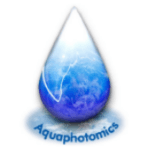
Aquaphotomics group of Biomeasurement Technology Laboratory at Kobe University, Japan, has started functioning as Aquaphotomics Research Department since April this year.
Our first publication, under the new name is opening a new venue of using Aquaphotomics for cell development studies. Therefore it deserves a somewhat special treatment. The article “Water Spectral Patterns Reveals Similarities and Differences in Rice Germination and Induced Degenerated Callus Development” has been published in MDPI’s Journal Plants few days ago, and can be downloaded at the links provided below.
The paper is a part of the Special Issue Seed Physiology focused on the latest findings in this research area. The topic may seem mundane and ordinary, but translated into the everyday language we could say the title of the paper is “what is wrong with this rice?” and “can I predict if this rice will grow normally or not?”. If only thing that we worry about is how to produce rice, it may not seem much. But, as the guest editor of the special issue nicely put it “Plants start out their life as a seed” – to look at seed is to look at the origin of life.

In the paper, we found out what happens in the seed that determines if it will develop normally into a nice rice plant, or if it will degenerate and form callus. The collaborative effort of aquaphotomics groups in Hungary and Japan, resulted in finding that the healthy seeds, despite many individual differences, will go through orchestrated phases in water structuring and restructuring during normal growth. On the other hand, the degenerated growth showed random changes in water structure, without any specific patterns, without phases, without common characteristics.
The promising results of SWNIR spectroscopy coupled with aquaphotomics suggest the strong potential of the technique for rice seed authentication and characterization, and beyond that, for detection of abnormalities in cell growth and development, which may offer excellent feedback for variety of early warning systems in different areas of research.
Abstract: https://www.mdpi.com/2223-7747/10/9/1832
PDF Version: https://www.mdpi.com/2223-7747/10/9/1832/pdf
